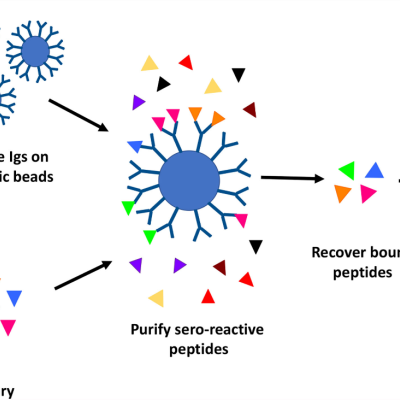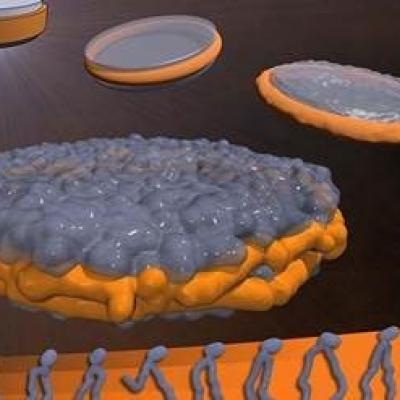LLNL researchers have developed a method to enhance the performance of polyelectrolyte membranes by using a humidity-controlled crosslinking process which can be applied to precisely adjust the water channels of the membrane.
Keywords
- Show all (102)
- Instrumentation (39)
- Synthesis and Processing (16)
- Diagnostics (13)
- Materials for Energy Products (6)
- Therapeutics (5)
- Additive Manufacturing (4)
- Material Design (4)
- Brain Computer Interface (BCI) (3)
- 3D Printing (2)
- Additively Manufactured (AM) Optics (1)
- Magnet Compositions (1)
- Material Characterization (1)
- Polymer Electrodes (1)
- Rare Earth Elements (REEs) (1)
- Structural Materials (1)
- (-) Membranes (2)
- (-) Vaccines (2)

LLNL’s high throughput method involves proteome-wide screening for linear B-cell epitopes using native proteomes isolated from a pathogen of interest and convalescent sera from immunized animals. LLNL researchers have applied their newly developed generalizable screening method to the identification of pathogenic bacteria by screening linear B-cell epitopes in the proteome of Francisella…

LLNL researchers have developed an alternative route to protective breathable membranes called Second Skin technology, which has transformative potential for protective garments. These membranes are expected to be particularly effective in mitigating physiological burden.
For additional information see article in Advanced Materials “Ultrabreathable and Protective Membranes with Sub-5…

LLNL has developed a novel process of production, isolation, characterization, and functional re-constitution of membrane-associated proteins in a single step. In addition, LLNL has developed a colorimetric assay that indicates production, correct folding, and incorporation of bR into soluble nanolipoprotein particles (NLPs).
LLNL has developed an approach, for formation of NLP/…

